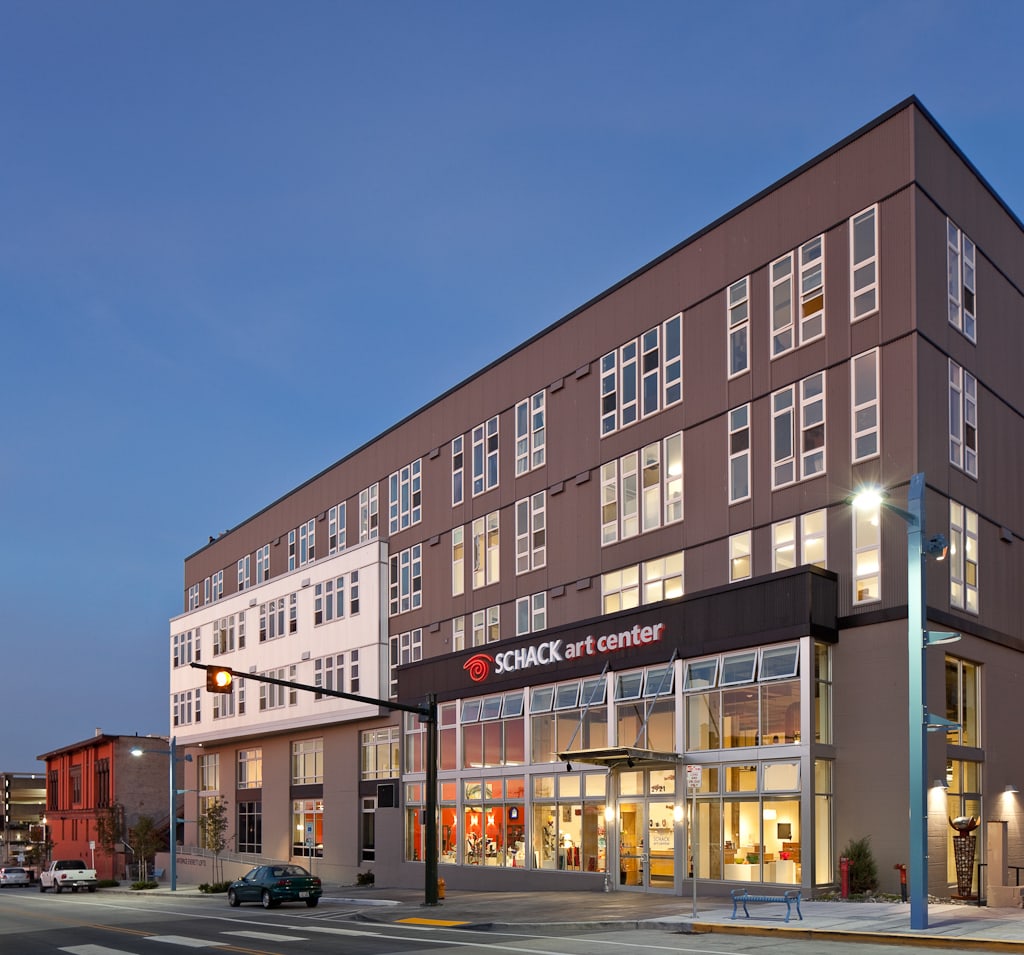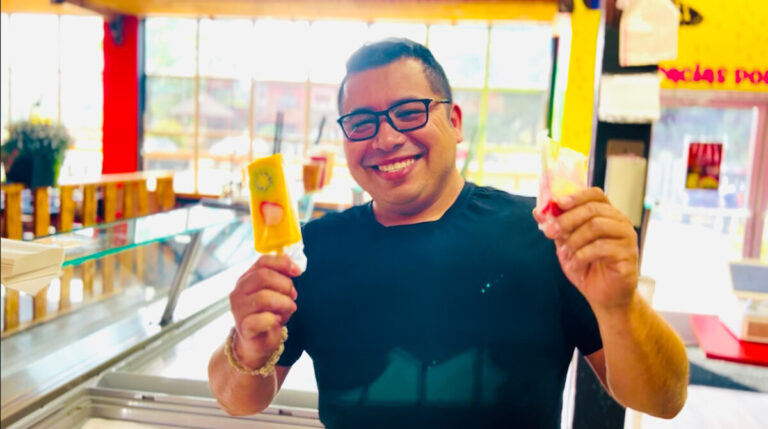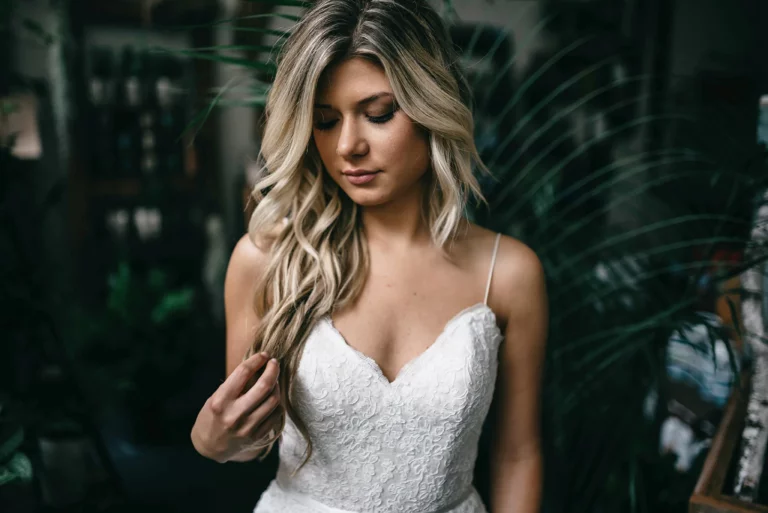Two exhibition galleries; a live glassblowing hot shop; seven production studios; classes, workshops, and a kids summer arts camp; event spaces–and 19,000 square feet dedicated to exhibiting the work of prominent regional visual artists in the Northwest. These are just some of the things you’ll find at the Schack Art Center in Everett, Washington.
Originally founded as the Arts Council of Snohomish County in 1974, the Schack Art Center’s mission is to support local artists and expose the surrounding community to the arts through education, exhibitions, and events. Although the Arts Council originally sought to promote a diverse array of artistic programming, the organization narrowed its focus in the early 1980s to visual art, and that focus has continued to the present day. Today, visitors to the non-profit, admission-free gallery space can encounter a whole host of artistic displays–from oil painting and printmaking to mixed media and metallurgy–all done by artists from Washington State or the surrounding areas.
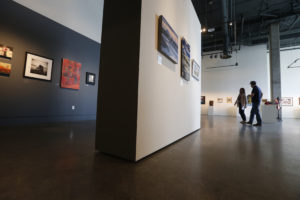
Patrons exploring one of Schack’s exhibition galleries
“We try to mainly focus on this region, but that’s broad for us,” says Maren Oates, marketing and communications director for the center. “We have artists from as far north as Canada all the way down to Oregon.”
Maren points out that the center is not a museum in that it doesn’t have a permanent collection and, with few exceptions, all of the artwork exhibited is for sale. “We’re a consignment gallery,” she says, “and we split the sale with the artists 60/40, so the artist gets 60 percent.” Proceeds from art sales, as well as sales from the center’s retail store, rent for studio space, and class registration fees help finance Schack’s work, along with grants and donations.
These funds help Schack put on a wide variety of programming each year, including regular exhibitions, which typically rotate every six to eight weeks. Recent exhibitions include “Fiber Fusion,” a collection of works by fiber artists in partnership with the Surface Design Association that featured, among many other pieces, a seven-foot tall sculpture made entirely of sock monkeys. “It’s always interesting to see where artists take things, and I think that’s what people enjoy–coming in and sometimes being surprised by what they see,” Maren says.
In 2017, the center also hosted the exhibition “Convergence,” which showcased the works of contemporary Mexicano artists in the Pacific Northwest. “A lot of them talked about what it means to be Mexican or a Chicano in this world, in this climate right now,” Maren says, pointing to how the works featured touched on various themes of social justice prevalent in the news and pop culture of the moment.
Get the Gravity newsletter for the latest FAQs, tools, tips and tricks
One of the most popular exhibitions the center has hosted in recent years was a 2016 show of prints by Chuck Close, the famed American painter and photographer who grew up in Washington state. While Close’s works were on loan (and therefore not for sale), the center used the opportunity to feature other local printmakers, including the Seattle Print Arts Association and women printmakers from the Skagit Valley, in other exhibitions throughout the year.
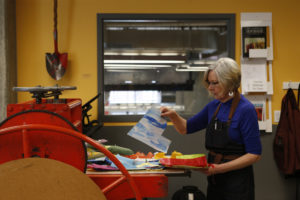
A printmaking instructor preparing for a class
One of the things that makes such exhibitions possible is Schack’s 19,000-square-foot home, which, despite the center’s long history, is only a few years old and came after years of making do with more improvised locations.
“For the first few decades, we had spaces that we rented,” Maren says. “We actually had a couple of oddball spaces. We had one small classroom in a parking garage that we used for the classes that we offered and also for things like our teacher workshop or our field trips. And then we had an exhibits gallery space that was kind of a shared space with a group that rented out the lobby area where we had the exhibits and a ballroom that was adjacent for weddings and events. So that created some challenges at times.”
In the early 2000s, the group decided they needed a more permanent location in order to better serve the community. “We’d really outgrown the small space that we were in,” Maren says. “And with all of our programs, we needed a home. We needed that permanent facility to be able to grow and bring in more participants and share the visual arts with the community.”
In 2006, the council launched a capital campaign to raise funds and partnered with Artspace Projects, a non-profit developer that builds affordable housing for artists, to create that permanent home. In April 2011, the group moved into its current space on Hoyt Avenue and changed its name to the Schack Art Center in honor of longtime local arts patrons John and Idamae Schack. The center occupies the first two floors of the space, while the top three floors consist of live-work lofts for local artists operated by Artspace.
“It’s been a huge transition but a great one,” Maren says. “It was the right time and it’s really been a wonderful thing for the organization and for the Everett community and beyond.”
Thanks in no small part to the new, multi-purpose space, the Schack Art Center now has the opportunity to serve the surrounding community in a variety of ways. Attracting over 40,000 visitors per year, the center showcases between six and seven hundred artists annually through a combination of exhibitions, events, working studios, and a retail shop. In addition, the center offers between ninety to a hundred classes each quarter ranging from one-day workshops to more intensive courses like an introduction to glassblowing. They offer classes for anyone over age six and at any skill level and teach about 2,000 students a year.
Although the classes typically carry a registration fee, the center, in its commitment to community engagement, offers financial assistance to ensure that anyone can participate regardless of their economic situation. The center also serves as a regional affiliate for the Scholastic Art & Writing Awards, a national program through which Schack invites seventh through twelfth-graders in Snohomish County to submit works of art that are then judged and awarded gold, silver, or bronze “keys.” The center receives about 1,000 applications a year and typically awards 300 keys or honorable mentions. Students who receive the awards then get to exhibit their artwork in one of the Schack galleries, which helps to foster community engagement and, hopefully, the students’ continued interest in creating art of their own. “It’s a great experience for them,” Maren says. “Not many people really get to have their work in a gallery, and so to have your work exhibited at that age is pretty exciting.”
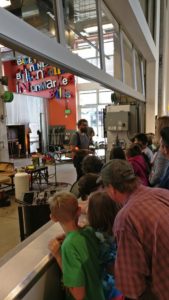
Students on a field trip peer into Schack’s glassblowing hot shop
Through the Scholastic program, Schack also offers the Susan Jane Russell College Scholarship to a graduating Snohomish County senior who plans to continue his or her arts education in college. Interested seniors work with their advisers and teachers to submit a portfolio of eight works, and one student (of typically around twenty applicants) is chosen to receive the scholarship. The goal, according to Maren, is to encourage students to pursue art as a career.
Scholarships aren’t the only way Schack supports local artists in their work. In addition to its galleries, Schack provides several studio spaces that artists can rent by the hour or day. These include a flame and kiln studio as well as a hot shop, which is used by glassblowers and is visible to the public, so visitors can watch these amazing craftsmen and women as they create vivid pieces–some large, some small–before their eyes.
When asked why Schack provides so many resources to glassblowers, Maren cites the region’s long fascination with the art form, especially the influence of famed glass sculptor Dale Chihuly, who was born and raised in Washington State and exhibited some of his work through the Arts Council of Snohomish County early in his career. Maren also points to the influence of the Pilchuck Glass School in Stanwood, Washington, which has long been considered one of the premier institutions for learning the art of glasswork. “There’s been a lot of interest in glass in the greater Seattle area for a long time,” she says. “It’s sort of like a hub of glass within the art world. There are many glassblowers in this area, and when we spoke with them, it became apparent there weren’t enough studios to rent, especially outside of Seattle. I think we’re still the only public access hot shop available for rent between Snohomish County and the Canadian border.”
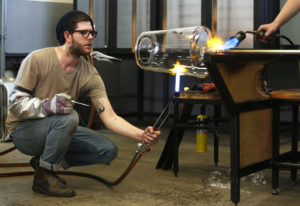
A glassblower at work in the hot shop
Outside of their day-to-day operations and exhibits, Schack organizes four major events each year designed to draw in even more interest from the community. Event season kicks off in February with a large art auction that serves as one of the center’s primary fundraising events. In late Spring, they host the Artist’s Garage Sale, a six-hour studio sale in which artists sell their work at a large discount in an effort to clear out their studio spaces and get rid of old stock. “It’s a frenzy of an event, but you can get some really great deals on artwork,” Maren says.
In August, the center puts on the Fresh Paint festival on the Everett waterfront. “It’s an artists-in-action festival, so we ask the artists who are selling through their booths to also have some way to engage the public in their art by demonstrating,” Maren says. “A lot of painters will be painting on site, or people might bring samples of work in progress. A potter might have a wheel. It’s an opportunity for the public to understand the creative process that goes into the final piece, which is a nice way to connect everything.”
The final event of the year comes in September in the form of Schacktoberfest, during which the center turns its gallery space into a glass pumpkin patch, complete with straw bales and 700 glass pumpkins. Visitors during this time also have the opportunity to make their own glass pumpkins. “It’s a wild ten days of pumpkin, pumpkin, pumpkin,” Maren says. “It’s pretty fun; it’s pretty unique.”
But you don’t have to wait for a special event to experience all of the amazing art Schack offers. Upcoming exhibits include “Americans Interned,” a series of works by husband-and-wife artists Chris and Jan Hopkins that explores the experiences of Japanese Americans in World War II internment camps. “It’s a very personal story for the two of them because Jan’s parents met at an internment camp during World War II, and so that’s really where the interest in this project came from for them when they started it five years ago,” Maren says. Later this year, Schack will feature “Voyager,” a solo exhibit by the well-known regional artist Steve Jensen that explores his personal experiences with grief and loss.
“We’re really the only arts center like us in the county, and in some ways I don’t know that there’s even anything exactly like what we do further south in Seattle,” Maren says. “Everett is the largest city in Snohomish County, and so there is a real push with regard to encouraging and growing the arts community in this area. We are the largest exhibitor and opportunity for classes and center for the visual arts in Snohomish County, and so we’re unique in that way.”
The Schack Art Center is open seven days a week and does not charge admission to any of its exhibitions. For more information visit www.schack.org.
By Brooke Carey, Content Editor

